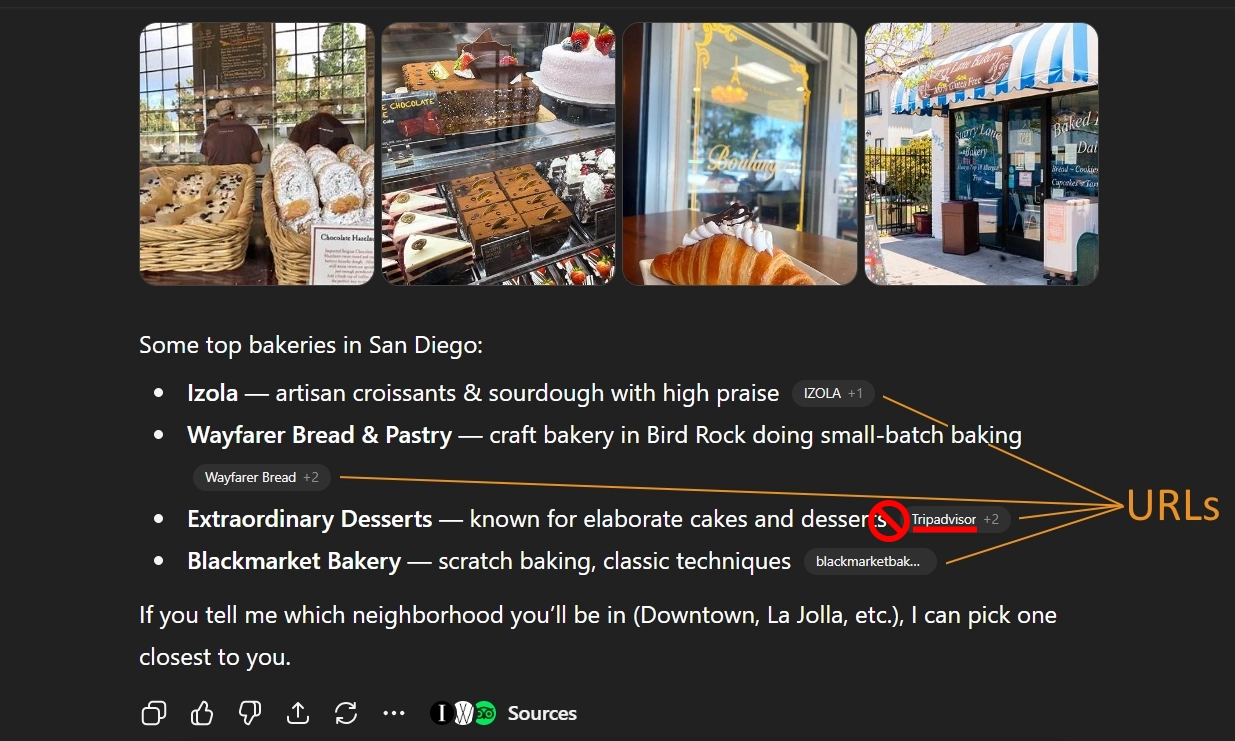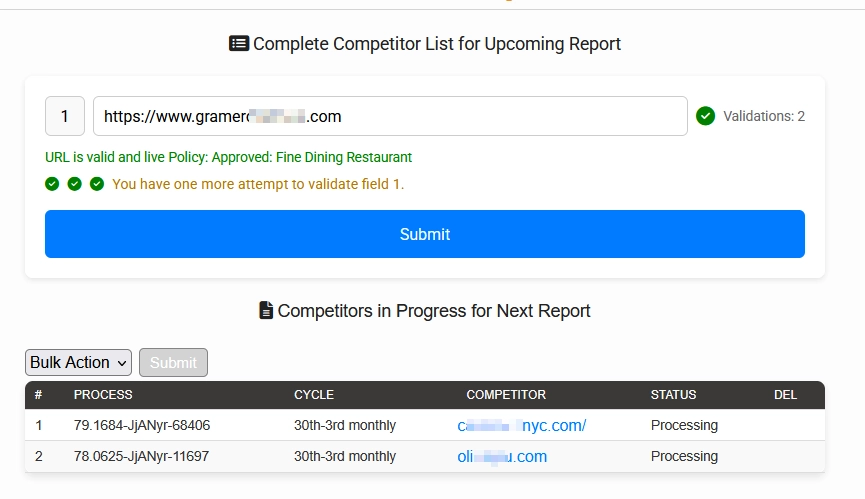ImpactFuse SEO™ by WebCarrots
How to Find Competitors in AI & Organic Search
WebCarrots | Support Guide
By following these steps, you’ll accurately identify your top competitors in AI chat and organic Google search results, helping you submit competitors in our Web Scraping Tool.
🌟Best practice: For utmost accuracy, it is best to do the search from the location where the potential customers are located. Agencies and freelancers may ask their clients to do this where they are located.
Important: Replace [Your City] with your actual location (e.g., San Diego).
Step 1: Select Main Term and Variants
Identify the primary keyword or search term that potential customers might use to find your business. For example, if you run a local bakery, this could be "best bakery in [Your City]." Repeat the process with strong variants such as "top bakery in [Your City]" or "bakery near me" in order to identify the competitors dominating the results.
Step 2 AI: Perform an AI Search
Open your preferred AI chat or answer engine and enter a search term or full question that potential customers are likely to ask when looking for your business. Repeat the process with strong variants in order to identify the competitors dominating the AI-generated results.


/?.... so if the full url is: https://bakery.sandigo/home/?utm_source=some-engine.com, remove: ?utm_source=some-engine.com, sometimes the data after the ? can be quite long – remove it all.Step 2 SE: Perform a Google / Bing Search
Open an incognito/private window and search for the keyword on Google. This ensures that your search is not influenced by previous searches or personal data.
Step 3: Filter Out Non-Competitors
Ignore ads, Google My Business listings, and social media or review sites like Yelp, Facebook, Trip Advisor, forums and blogs. Focus on the first three-four listings, which are your main competitors.
Step 4: Identify the Top Organic Competitors
Click on the top three-four AI and organic results on each search, verify that they are legitimate competitors, and copy the full URL from the address bar.
Step 5: Add Competitors to Your List
Paste the competitor URL into your competitor list in the Competitor Validation & Data Scraping form. See "Screenshot: Competitor List Manager."
Step 6: Optional Service
You may use our network of expert SEO affiliates to search this for you for a fee.

Disclaimer:
This guide is intended to provide general guidance only. It does not guarantee correct implementation, as each case may vary. Due to the many factors involved, we make no guarantees or promises that following the methods outlined will improve your website’s visibility, traffic volume, or position in any search engines.
Custom Solutions
Need more features or a larger package? We're here to help. Reach out to us and we'll craft a solution that fits your specific needs to perfection.
Let’s Get Started